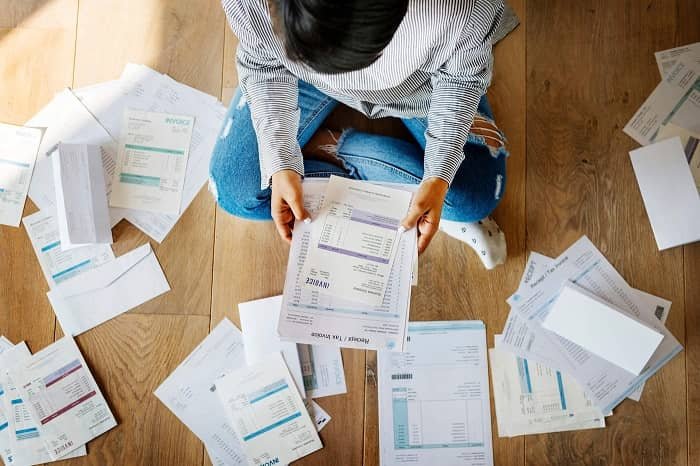If you’re wondering what is Credit Card Debt? It’s the balance you owe on one or more credit cards. Unlike mortgages or car loans, which have interest rates that range from three to five per cent, credit card debt is revolving.
Every day that a balance remains on a card costs you a certain amount in interest. In addition, late payments can rack up even more debt.
Generally, credit card debt is defined as the amount you owe on your cards. This amount is owed regularly. It increases if you don’t pay your entire balance each month.
Fortunately, it’s not challenging to reduce your credit card debt. Most credit card companies have a free grace period, and you can often avoid paying it if you follow a few simple guidelines.
First, define the term “credit card debt” and its characteristics. Credit card debt consists of any amount of money that you owe on your cards, whether it’s a balance of thousands of dollars or a balance of only $5.
What is Credit Card Debt?

Remember, carrying a balance is not bad. It’s a good thing! You must pay interest to the credit card companies, which will compound the problem.
By planning and keeping your monthly payments to a minimum, you’ll be on your way to reducing your debt and staying out of the danger zone.
How to Get Out of Credit Card Debt
If you are in massive debt, you probably wonder how to get out of credit card debt. Perhaps you used your credit cards for good reasons, but your spending habits were unhealthy, and you are now in debt.
You must understand that credit card bills can have severe consequences for your financial security, no matter your reasons.
Gail Cunningham, co-president of the nonprofit National Foundation for Consumer Credit Counseling, offers some tips for getting out of debt and back on track.
First, you need to know your financial situation. The best way to do this is to write down all of your debts, balances, and the APR (annual percentage rate) charged on those accounts.
This information will help you determine the most effective way to reduce your debt. You may want to start by paying off the highest-interest balances first. You can also try paying off the lowest-balance cards first.
The second step to debt reduction is to make sure you have a clear picture of your financial situation. Write down all your debts in order of balance, and identify their annual percentage rates, which are the costs you’re paying to borrow money.
This information will help you determine the best strategy to eliminate your debts. You may want to prioritize the highest interest-rate debts while tackling lower balances later.
Tips for Paying Down Your Credit Card Debt

If you have too much debt, it is vital to pay it down as soon as possible. Here are some tips for paying off your credit card debt. The first tip is to pay cash whenever possible.
If you have to borrow money, consider using a debit card. Another option is debt consolidation, which combines multiple balances into one single one. This option is often a better choice if you struggle to make your minimum payments on several cards.
The second tip is to avoid using credit cards to cover unexpected expenses. Having a card can come in handy when you run into a costly emergency. But if you fail to pay it, you’ll have more bills.
Instead of letting the interest accrue, pay off the debt as quickly as possible. This way, you’ll be able to bring your finances back into balance.
The third tip is to review your credit score regularly. This will help you identify any problems that may be affecting your score. You should review your credit report regularly to understand your score.
Although paying off your credit card debt can seem daunting, the first step can make it all seem more manageable. By paying extra money each month, you can get out of debt. It’s worth remembering that you’ll never reach your goal if you don’t take action.
How to Clear Credit Card Debt
The first step in clearing credit card debt is to analyze your finances. Make a list of all your debts, including balances, annual percentage rates, or APRs. This information will help you plan your repayment strategy.
You may want to pay off the most significant balances first and then move to lower ones. This will help you pay off your credit card debt faster. Also, you will be able to budget your monthly spending, reducing your balances as you go.
Once you know how much you owe, you can calculate your monthly income based on the type of debt. If you have credit card debt, you will need to compare your monthly income to your monthly expenses.
These expenses include mortgage payments, rent or mortgage payments, grocery bills, etc. Then compare your debt to your income, including salary, interest from savings, and other sources of income. If you have more than enough money, you can use a balance transfer to pay off your debt.
If you’re looking for ways to pay off your debt, consider how much you spend each month. Your debt may have resulted from a shopping spree, an emergency, or an expensive medical bill.
While it’s tempting to use credit cards for every little thing, you’ll likely find it harder to pay off your balances than you thought. Instead, look for debt reduction strategies. Fortunately, there are plenty of options available.
Ways To Consolidate Credit Card Debt
One of the best ways to consolidate your credit card debt is to use a balance transfer credit card. This is the easiest way to reduce your monthly payments while keeping your credit score high.
If you have a poor or bad financial history, you may consider a balance transfer credit card, a personal loan, or a do-it-yourself method. These methods are all excellent options for managing your debt, but they aren’t the best option for everyone.
A debt management plan (DMP) is another option to consolidate your credit card debt. A DMP is a great way to pay off multiple credit card balances into a single monthly payment.
It can help reduce your interest costs by transferring your balances onto one new card with a lower APR than your current cards.
You can also get a lower interest rate by consolidating your debt. You’ll also have fewer payments to remember instead of several.
Regardless of which method you choose, knowing your numbers is essential before applying for a debt consolidation loan. The CFPB recommends creating a budget to see where you can cut back on expenses.
Having a clear picture of your credit card debt is essential in choosing the proper method. By doing so, you’ll get a lower interest rate and a lower monthly payment. And because you’ll only have one payment, it’s much easier to manage your finances.
How To Use Credit Card Debt Calculator
A credit card debt calculator can help you calculate your debt and interest rate payoff time. You can enter your balance, annual percentage rate, and monthly payment to get started.
The calculator will automatically apply an estimated minimum payment to the lowest rate card and then apply that amount to the highest rate card.
You can keep adding cards to the calculator and changing the amounts until you reach your target payoff time.
This calculator will also allow you to compare different payment schedules for different credit cards and different APRs.
Another feature that a credit card debt calculator offers is an exciting roll down. This tool can help you estimate your payoff date based on various interest rates.
By choosing a rolldown payment schedule, you can see how much you can save by paying off your debt more quickly.
The rolldown method will apply an additional payment to the first card at the highest rate until the debt is paid off. It will also show you when you will be able to reach your goal.
A credit card debt calculator will estimate how long it will take you to pay off your debt. You can also use a snowball approach to see what amount of interest you’ll save over time.
You’ll be surprised at how much money you can save in interest over time. Once you know your exact amount of debt, you can use the credit card debt calculator to decide whether this is the best strategy.
The Minimum Payment on a Credit Card
The minimum payment on a credit card is the amount you must pay each month to avoid late fees. Your minimum payment will depend on the credit card issuer’s policy, but it may fluctuate. Missing a payment could result in a late fee.
You may also lose your introductory APR if you do not pay the minimum on time. Then, you’ll end up paying more interest on your balance.
The minimum payment on a credit card varies, depending on the interest rate and balance. Typically, it’s about 2% or 4% of the balance. For example, if your monthly balance is $3,000, the minimum payment on a 2% credit card would be $60.
Your minimum payment will include interest and fees and will be determined by how much of your balance you have left before your credit limit is exhausted. In this case, the minimum payment will be $50, including interest and fees.
The minimum payment on a credit card varies from issuer to issuer. Some issuers use a flat percentage of your statement balance. For example, if you owe $10,000 with fees, you will need to pay $200 to pay off that balance.
The most common examples of such a minimum payment on a credit card are credit unions and subprime banks. You can find out more about your minimum payment options on the credit card’s website.
- How To Avoid Credit Card Debt?
- How To Eliminate Credit Card Debt For Good
- How To Get Rid of Credit Card Debt Consolidation
For More Latest Finance Updates and Information about Credit Card Debt, Visit Solobis NEWS Magazine.

